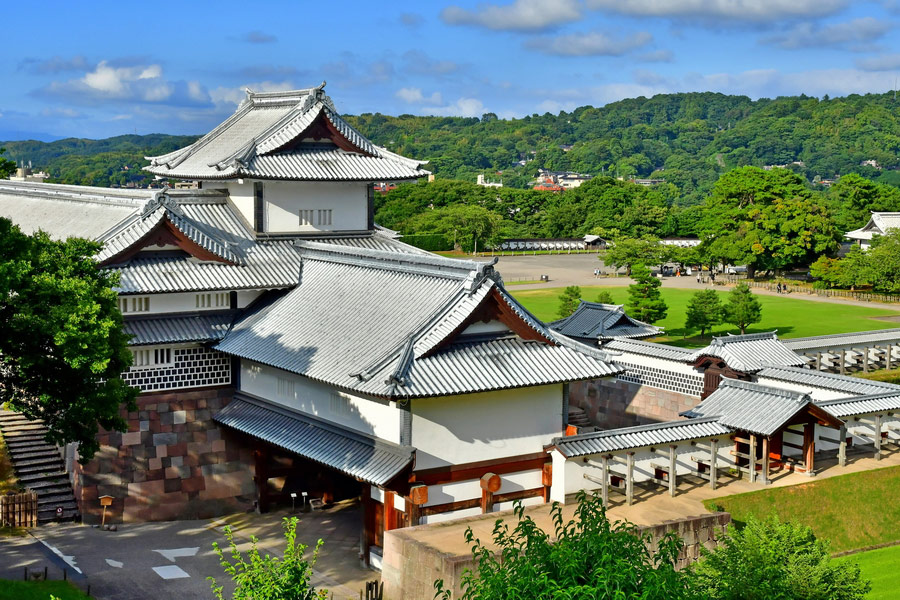Tours, Attractions and Things to Do in Kanazawa
Kanazawa Travel Guide
Sometimes referred to as Little Kyoto, Kanazawa (金沢市) is a charming city located in the western part of Honshu Island in Ishikawa (石川県) Prefecture. Known as one of Japan's centres for arts and traditional crafts, Kanazawa offers a blend of cultural heritage and scenic beauty.
The Japanese word Kanazawa translates to 'Gold Marsh', a name that reflects the city's unique characteristics. The region's humid climate inspired the name, as did Kanazawa's status as a leading producer of Japanese gold leaf, which accounts for almost 100% of the nation's supply and serves as one of the city's main attractions.
Despite its small size (468 km²) and population (466,000), Kanazawa is one of Japan's major tourist centers. Its popularity is driven by:
Traditional Atmosphere. Kanazawa exudes the charm of traditional Japan with its narrow streets, stunning gardens, tea ceremonies, and geisha performances.
Cultural and Religious Attractions. The city is home to numerous cultural and religious landmarks, making it a haven for history and art enthusiasts.
Easy Accessibility. Despite being over 400 kilometers from Tokyo, Kanazawa is easily reached in just 2.5–3 hours by Japan’s modern trains. This makes a Kanazawa day trip from Tokyo a great option for those wanting to explore the history and culture of the 17th–19th centuries. In a single day, you can stroll through the main districts, visit the renowned Kenroku-en Garden, and tour Kanazawa Castle and other key sights.
Favorable Climate. The warm season in Kanazawa lasts from March to November, with temperatures ranging from 10–30°C, making it an ideal time to visit.
Kanazawa Tours
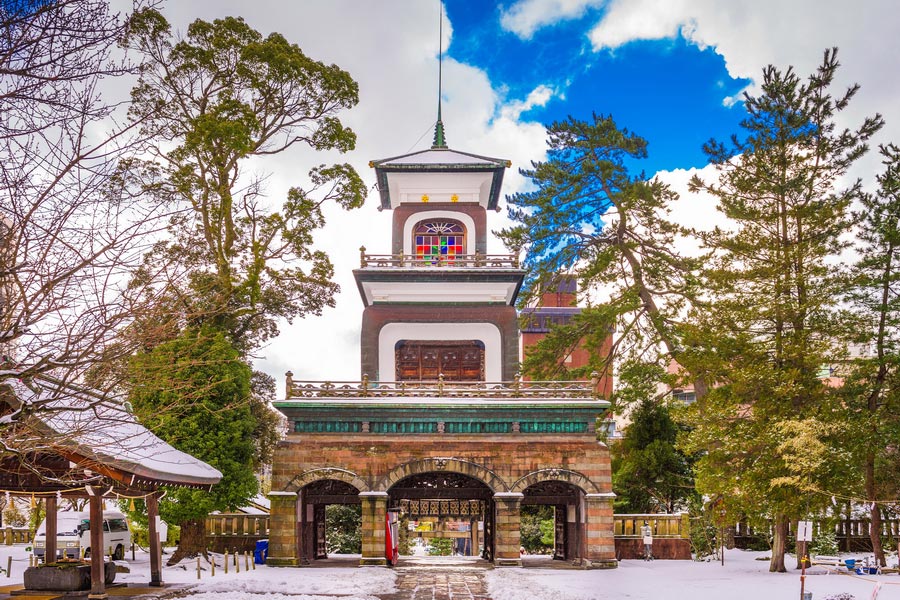
Kanazawa Guided Tours. Perfect for exploring cultural attractions while learning in-depth about their history and significance.
Health Tours. Kanazawa offers public onsen, as well as ryokans and hotels with private onsen (Kanazawa hotels with private onsen). A 2–3 day stay can provide relaxation and health benefits.
Free Walking Tours. These leisurely tours are the most popular, allowing visitors to soak in the beauty and atmosphere of the city at their own pace.
Best Time to Visit Kanazawa
The best time to visit Kanazawa is from March to June. During this period, the weather is warm and dry, with more sunny days compared to other seasons. Additionally, from late March to mid-April, you can experience the cherry blossom season in Kanazawa.
In autumn, the weather in Kanazawa can be more unpredictable, but the stunning views of the autumn foliage make the city a popular destination, attracting many travelers.
History of Kanazawa
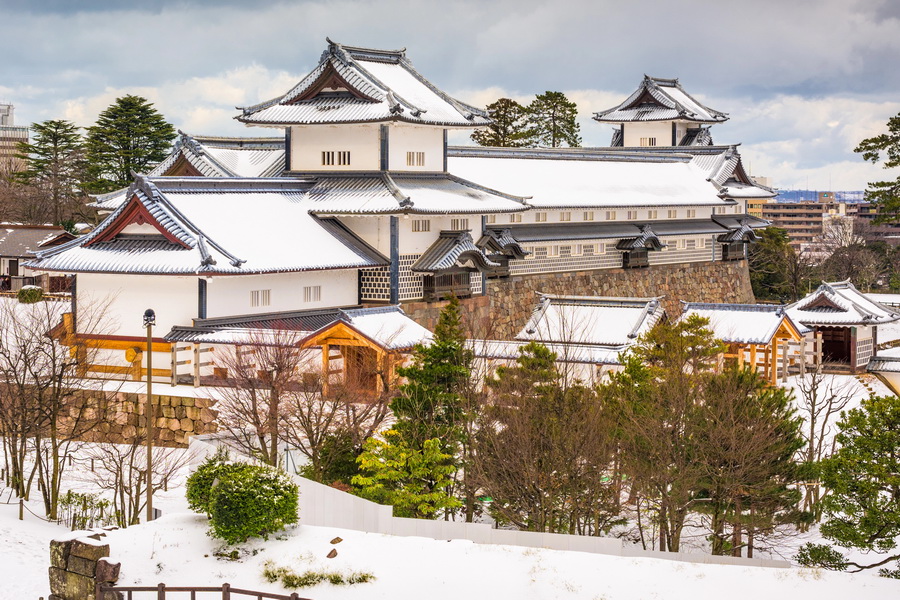
Kanazawa is a city with a rich history that dates back to the 16th century. In 1583, Maeda Toshiie (前田 利家) captured the city's centerpiece, the iconic Kanazawa Castle, and made it his residence. This pivotal event is commemorated to this day through the city’s main festival, Hyakumangoku Matsuri (百万石まつ).
The Maeda family governed Kanazawa and the historic Kaga Province (which now comprises parts of Ishikawa and Toyama Prefectures) for several centuries until the Meiji Reformation in the late 19th century.
During their rule, the Maeda clan dedicated themselves to transforming Kanazawa into one of Japan’s cultural hubs. They invited skilled craftsmen, scholars, artists, and musicians to the city. By the 17th century, Kanazawa’s population had already reached 50,000, and by the 19th century, it was among the most densely populated cities in Japan.
Thanks to the Maeda family’s efforts, Kanazawa experienced a cultural renaissance. Education and the arts became accessible not only to the elite but also to ordinary citizens. The legacy of this cultural flourishing endures to this day, with Kanazawa’s residents often recognized for their appreciation of literature and the arts.
What to Do in Kanazawa?
Kanazawa Landmarks and Attractions
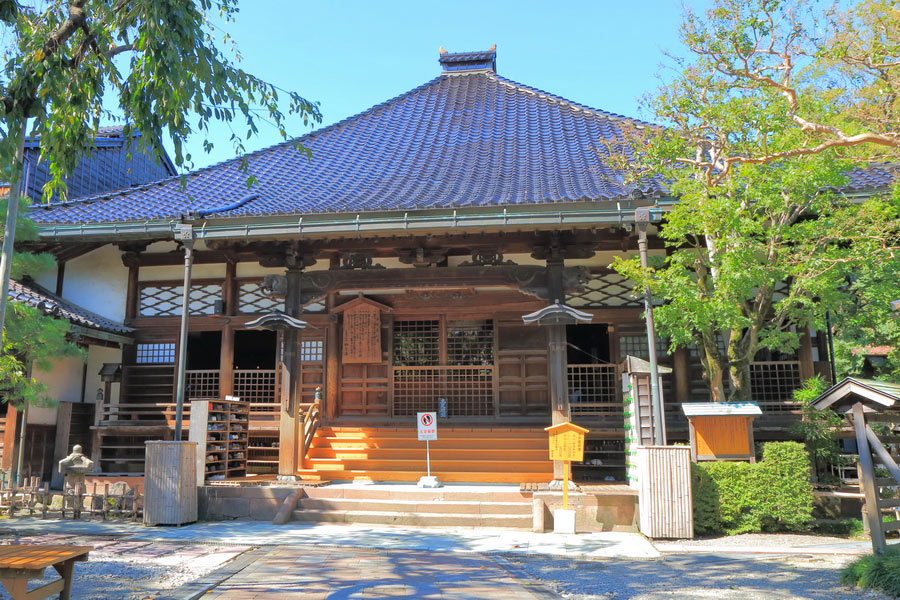
When planning a trip to Kanazawa, make sure to visit its iconic landmarks, starting with Kanazawa Castle (金沢城). This historic complex, with over 400 years of history, has served various roles throughout the centuries, including as a fort, the residence of the Maeda clan rulers, a Japanese army base, and a university campus. Though parts of the castle were destroyed by fires, they have been meticulously restored, and in 2008, it was recognized as a National Treasure Site. Today, Kanazawa Castle functions as a museum open to the public.
Another must-see is Myoryuji (妙立寺), popularly known as Ninja Temple. This cleverly designed structure, originally situated outside the city, was built as a disguised fort to thwart surprise attacks. Its hidden staircases, secret tunnels, and traps create an experience akin to a modern-day escape room, making the Ninja Temple tour especially appealing to tourists.
Finally, don’t miss Oyama Shrine (尾山神社), a Shinto temple renowned for its distinctive gate, which uniquely blends Asian and European religious architectural styles. This fusion makes Oyama Shrine a remarkable cultural landmark in Kanazawa.
Museums in Kanazawa
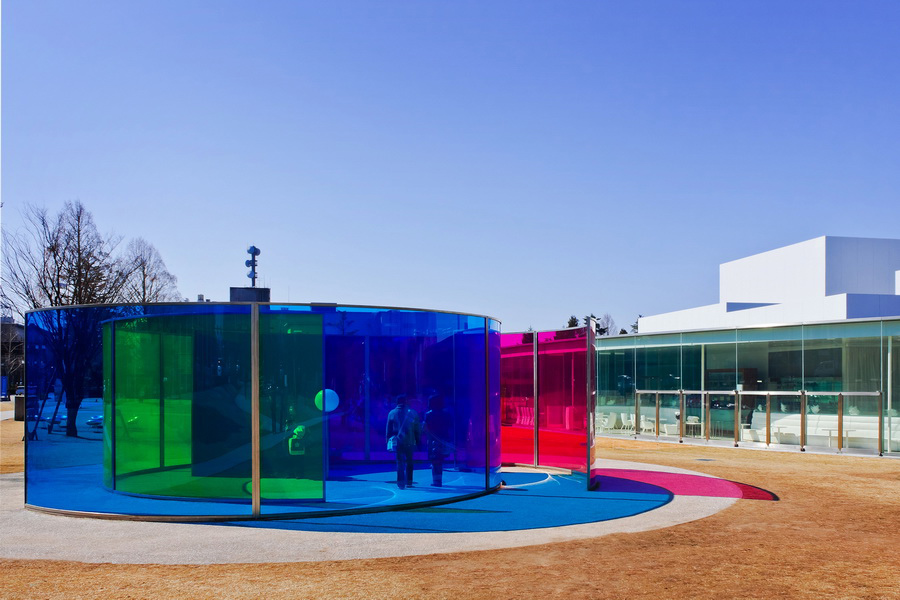
Kanazawa is renowned for its diverse range of museums, so much so that the city offers a special tourist ticket, the Kanazawa Cultural Facilities Passport. This pass allows visitors to explore 17 of Kanazawa's museums at a discounted price, valid for one day (approximately 3.29 USD) or three consecutive days (approximately 5.26 USD). Please note that prices are subject to change, so it's advisable to check the official website for the most up-to-date information before planning your visit.
The 21st Century Museum of Contemporary Art, located on the west side of Kenrokuen Garden (兼六園), is the city’s most famous and unconventional museum. Opened in 2004, it boasts a collection of over 3,000 objects and hosts both permanent and temporary exhibitions by Japanese and international artists, as well as numerous workshops. Architecturally, the cylindrical, modern building designed by the Japanese firm SANAA is itself a highlight. The museum's innovative design, with no defined facade, main entrance, or fixed visitor route, has earned it numerous awards.
Kanazawa Yasue Gold Leaf Museum (金沢市立安江金箔工芸館) showcases exhibits related to the production and application of gold leaf. Visitors can even watch demonstrations of its creation. Named after master craftsman Komei Yasue, who curated the original collection, the museum features items ranging from intricate ornaments to a grand gold-decorated Buddhist altar.
The Ninja Weapon Museum (忍者武器ミュージアム) offers an immersive experience into the world of ninjutsu weapons and martial arts from medieval Japan. With over 150 exhibits, including weapons and armor, it brings the ninja legacy to life. For a small fee, visitors can participate in the Ninja Experience, which involves throwing authentic shurikens (metal stars) at targets in a safe environment. The museum also includes a gift shop stocked with unique ninja-themed souvenirs.
The National Craft Museum (国立工芸館 ) was established in Kanazawa in 2020 after its collection was moved from Tokyo’s National Museum of Modern Art. This effort aimed to boost tourism in Kanazawa. The museum houses approximately 3,800 works, including nearly 1,500 masterpieces recognized as part of Japan's intangible cultural heritage.
The D.T. Suzuki Museum is dedicated to Daisetsu Teitaro Suzuki (鈴木 大拙 貞太郎, 1870–1966), a prominent Zen Buddhist scholar born in Kanazawa. Designed with a minimalist aesthetic, the museum offers a tranquil space to reflect on Suzuki’s life, work, and philosophical teachings. Its understated design complements the contemplative nature of the exhibits, encouraging visitors to engage deeply with his ideas.
Entertainment, Parks, and Shopping in Kanazawa
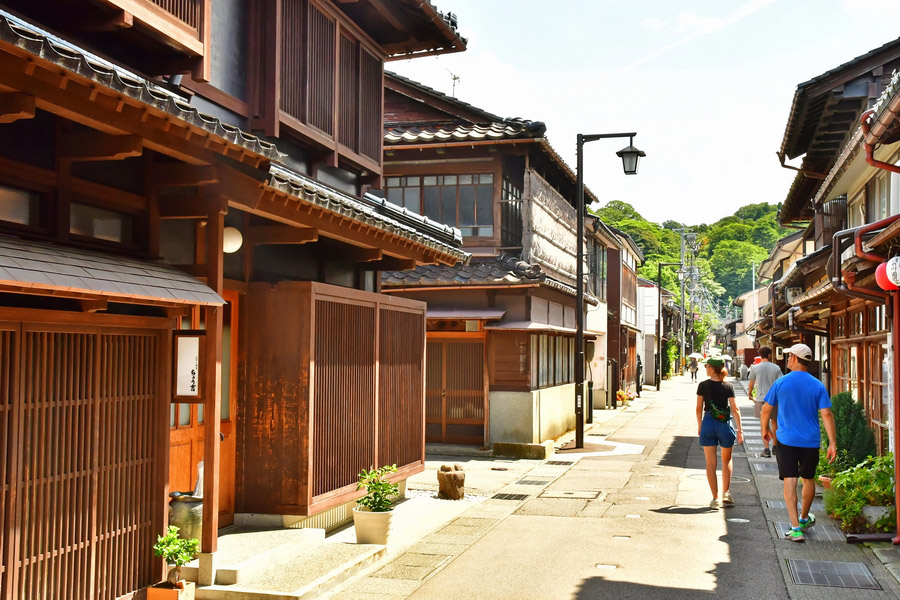
Kanazawa offers a wide range of fascinating activities, making it a captivating destination for travelers. Here are some of the best things to do in Kanazawa:
Explore the Kanazawa Geisha District. Kanazawa is home to three geisha districts, with the largest and most famous being Higashi Chaya (ひがし茶屋街), located northeast of Kanazawa Castle. This area, considered a national treasure, features beautifully preserved tea houses dating back about 200 years, evoking the charm of old Japan. While strolling through the district, you can participate in a tea ceremony, shop for unique souvenirs, and learn about the artistry of geisha.
The Higashi Chaya also regularly hosts geisha performances, which cost around 100 USD. For a more exclusive experience, the renowned Kaikaro Teahouse has been hosting special Geisha evenings since 2014. These events, including dinner and traditional performances, cost about 185 USD and are highly sought after.
Wander Through the Samurai District. Located west of Kanazawa Castle, the Nagamachi Samurai District (長町) is a preserved area where samurai homes reflect the elegance and discipline of these historical warriors. Among these Nomura-ke, a samurai house turned museum, where you can view fascinating artifacts from feudal Japan.
Relax at Kanazawa Onsen. About 30 minutes from Kanazawa is Yuwaku Onsen (湯涌温泉), known for its healing hot springs. Visitors can enjoy the therapeutic waters at the public onsen Shirasagi no Yu (しらさぎの湯) or indulge in private baths at nearby hotels and traditional ryokans.
Create Your Own Gold Leaf Art. Kanazawa is famous for its gold leaf craftsmanship, which can be seen adorning buildings, cosmetics, and even food. At the Kanazawa Katani Studio, you can take part in a gold leaf workshop, selecting from over 60 stencils to create unique designs on dishes, belts, or other items.
Attend a Noh Theater Performance (国立能楽堂). Spend an unforgettable evening at a Noh theater, experiencing the beauty of this traditional Japanese art form. Recognized as a UNESCO Intangible Cultural Heritage, these performances provide a window into Japan's rich cultural history.
Rent a Kimono for Stunning Photos. Kimono rental services are a popular way to immerse yourself in Japanese culture. The process, which includes dressing and creating traditional hairstyles, offers a deeper understanding of old Japan. Dressed in elegant attire, you can take memorable photos in Kenroku-en Garden (兼六園) or against the backdrop of historic tea houses in one of the geisha districts.
Parks in Kanazawa
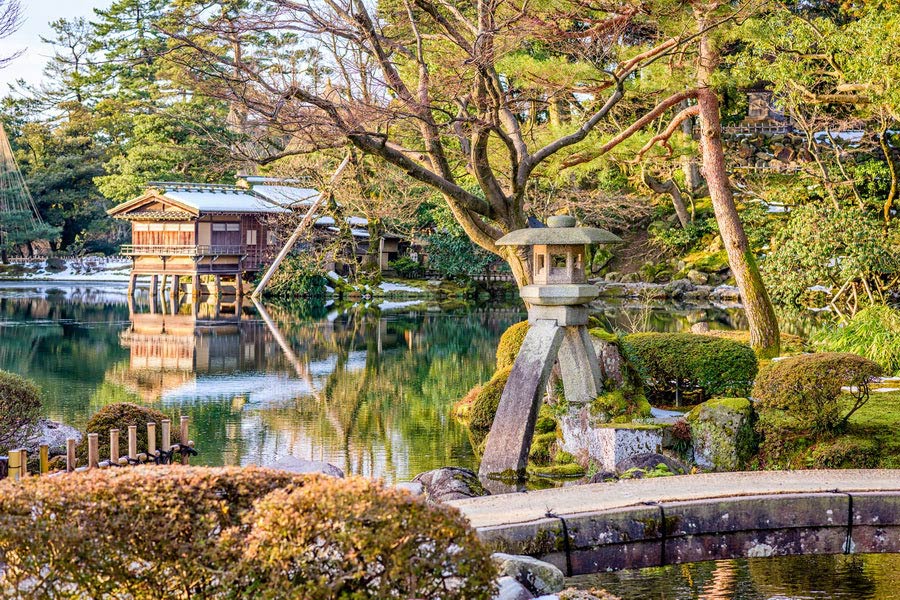
Kanazawa Castle Park surrounds the historic Kanazawa Castle and includes the picturesque Gyokuseninmaru Park, where visitors can stroll along peaceful paths or relax at a hilltop tea house offering traditional tea and sweets.
Kenroku-en Garden (兼六園), one of the most celebrated parks in Japan, is a highlight of any visit to Kanazawa. Spanning 11 hectares, Kenroku-en is home to vibrant trees, seasonal flowers, and a cascading waterfall. The garden’s centerpiece is the Kasumiga-ike Pond, famous for its two-meter-tall Kotojitoro Lantern, a unique bipedal stone lantern. Visitors can also participate in the Kenrokuen Tea Ceremony, a cultural experience held regularly within the garden’s serene setting.
Mt. Utatsu (卯辰山) offers breathtaking views of Kanazawa from its 141-meter summit. The walk to the top of Mt. Utatsu takes about 30 minutes and includes sights such as a vivid red Japanese-style bridge, three ancient Shinto shrines, and a beautifully maintained iris and hydrangea garden.
Shopping in Kanazawa
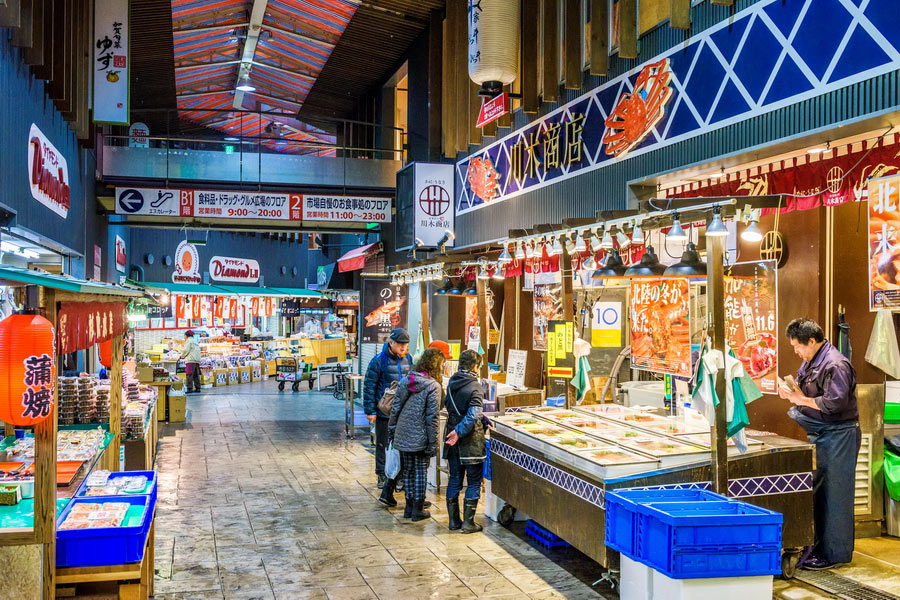
Major shopping centers in Kanazawa include Hyakubangai Shopping Centre (百番街ショッピングセンター), Forus, and Katamachi Kirara (片町きらら), offering a wide variety of shops and dining options. For a unique shopping experience and a taste of local culture, visit Omicho Market (近江町市場). This renowned Kanazawa’s fish market is one of the city’s top attractions, selling the freshest seasonal seafood year-round at affordable prices.
Kanazawa is also famous for its small shops showcasing traditional arts and crafts. Among the most iconic are the Gold Leaf Sakuda Main Store and Gold Leaf Jewelry Gold-Knot, both specializing in exquisite gold leaf products that reflect the city’s rich cultural heritage.
For souvenirs, don’t miss the Pokémon Center Kanazawa, where you can find clothing, accessories, and toys inspired by popular Pokémon characters, including the exclusive Kanazawa’s Pikachu. Another great option is the Ishikawa Souvenirs and Gift Shop, which offers a range of items perfect for small gifts and mementos from Kanazawa.
Food in Kanazawa
Kanazawa's food is rooted in traditional Japanese dishes such as ramen, sushi, and oden, as well as international favorites like soups, curries, and ice cream. However, unique ingredients and cooking techniques give certain Kanazawa dishes their distinctive character.
What to Eat in Kanazawa
Kanazawa Gold Leaf Ice Cream
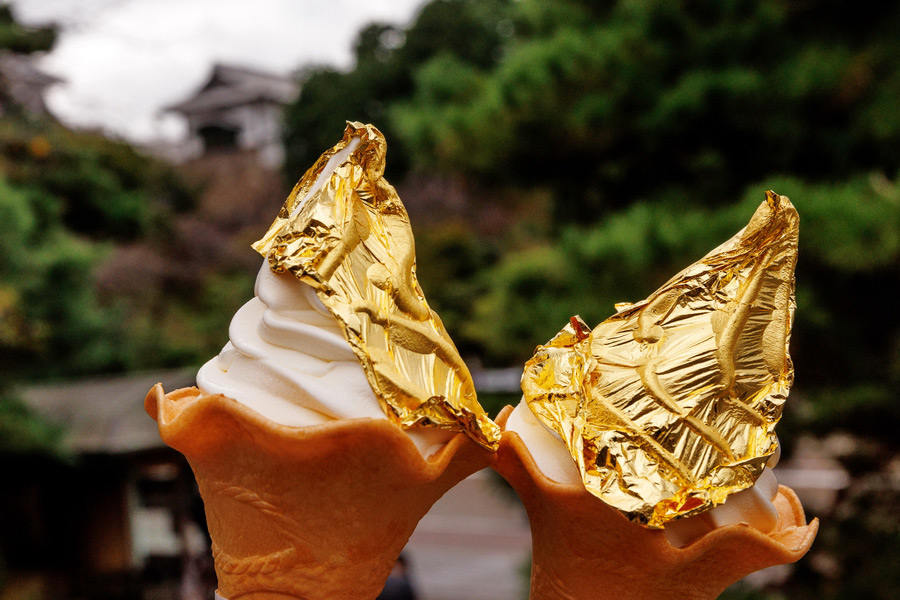
A culinary trademark of the city, this ice cream reflects Kanazawa’s association with gold leaf production. Its luxurious appearance makes it a popular treat for visitors. While the gold leaf is safe to eat, it is so thin that it has no noticeable taste or texture, making it more about aesthetics than flavor.
Kanazawa Curry
A regional take on Japanese curry, Kanazawa curry typically features a pork cutlet served with rice and a thick, dark brown curry sauce. This thicker consistency and richer color distinguish it from other Japanese curries.
Kanazawa Oden
This traditional dish combines vegetables and seafood simmered in a light broth. Kanazawa oden stands out due to two special ingredients: a small round piece of dough and, in premium versions, kani-men—the meat of a female snow crab.
Jibuni (治部煮)
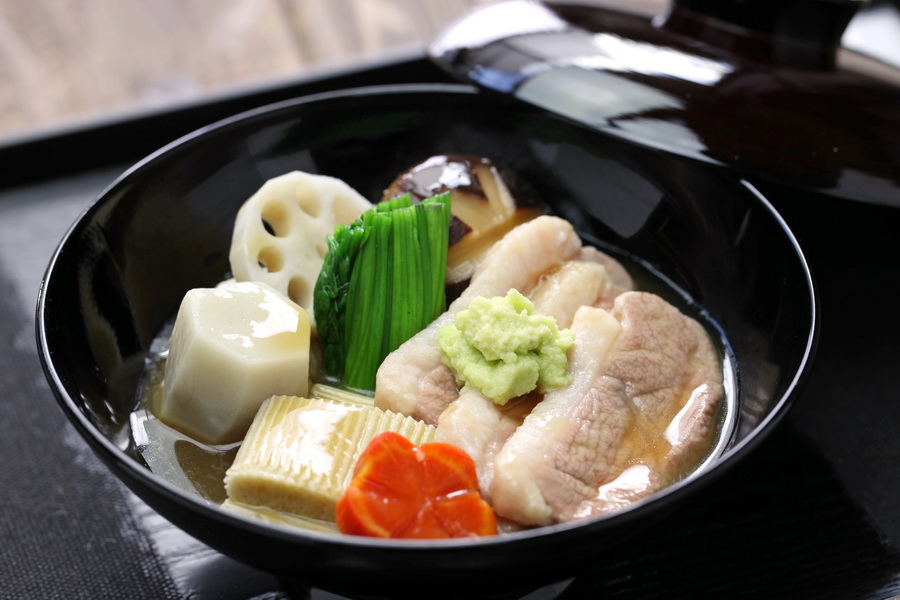
A rich and hearty soup traditional to Kanazawa, jibuni is made with duck meat, vegetables, and potato starch, creating a thick, flavorful broth.
Kanazawa Sushi
A regional specialty, Kabura sushi is the most notable type of sushi in Kanazawa. This dish consists of fermented yellowtail fish paired with turnips and malt, offering a unique flavor profile.
Noto Beef Dishes
Hailing from the nearby Noto Peninsula, Noto beef is a rare and premium type of Japanese beef known for its exceptional taste and quality. As a local delicacy, it is typically unavailable outside Ishikawa Prefecture, making it a must-try while in Kanazawa.
Kanazawa’s cuisine combines tradition and regional uniqueness, offering visitors a chance to savor flavors found nowhere else in Japan.
City Transport in Kanazawa
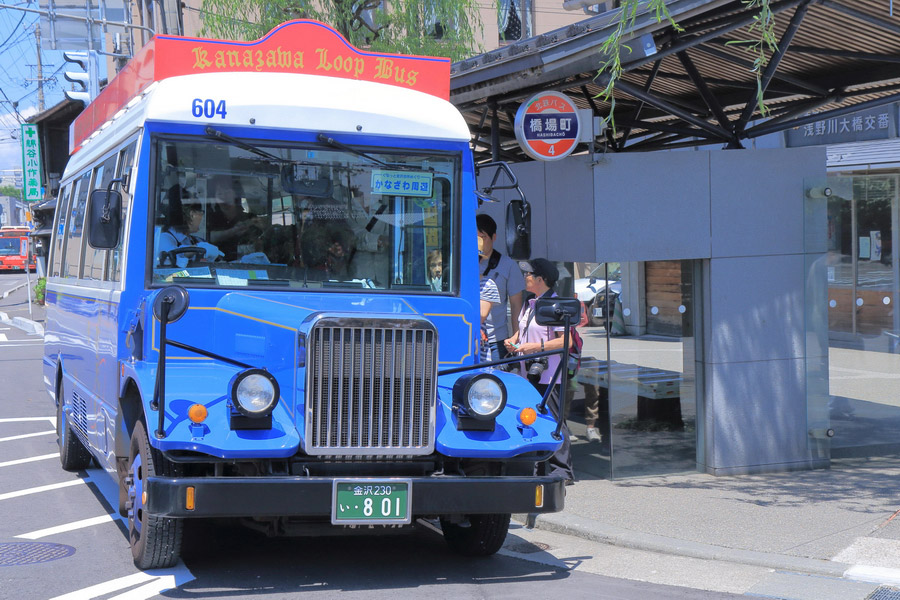
Public Transport
Kanazawa is a fairly small city, with Kanazawa Castle and Kenrokuen Garden as its conventional centre. All the main attractions are within about a two kilometre radius of these, allowing you to get around the city mostly on foot.
Buses
However, Kanazawa is well-connected with efficient transport options, including several bus lines operating throughout the city. The most popular buses amongst tourists are:
JR buses and Machi buses - allowing you to get from Kanazawa Station to the city centre. JR buses run constantly and the fare is fully covered by the JR pass. Machi buses run only on holidays and weekends, when there is more tourist traffic in the city.
Kanazawa loop buses are tour buses with a circular route along the city's main attractions.
Please note that buses in Kanazawa do not accept cash payment. Instead, you can pay with an IC card or day pass, which gives you unlimited travel on tourist buses and most city buses.
Bike Rentals
Due to the city's compact size, bike rental services like Machi-nori and Kanazawa E-Bike Rental BYUUN are also very popular.
How to Get to Kanazawa
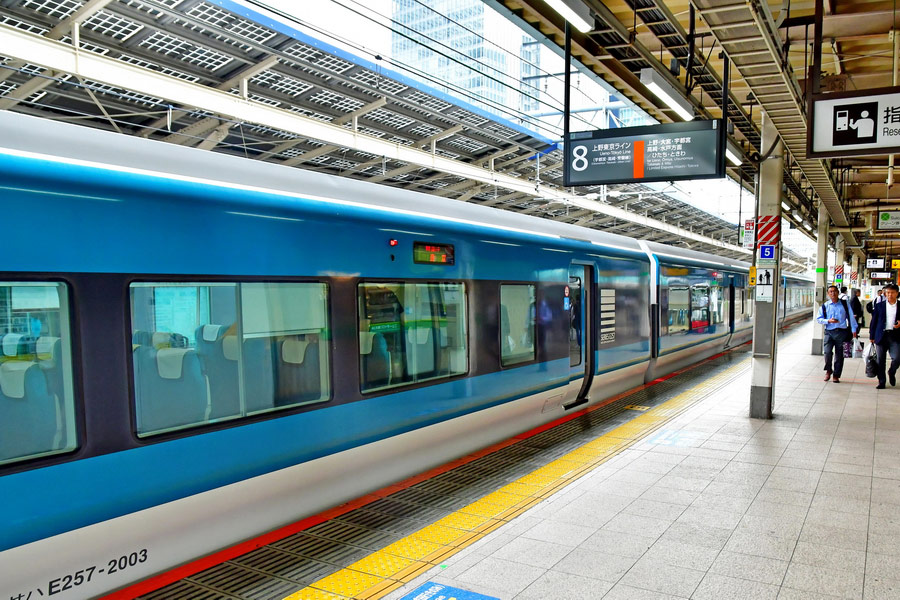
From major cities like Tokyo and Kyoto, the easiest way to reach Kanazawa is by train.
The Hokuriku Shinkansen (北陸新幹線) provides direct service from Tokyo Station (東京駅) to Kanazawa Station (金沢駅). The journey takes between 2.5 and 3 hours. For those planning round trips, the Kanazawa JR Pass is a cost-effective option, fully covering travel expenses from Tokyo to Kanazawa and back.
To travel from Kyoto to Kanazawa by train, you will need to make one connection. Start by taking the JR Thunderbird Express Train from Kyoto Station to Tsuruga Station (敦賀駅). At Tsuruga, transfer to the Hokuriku Shinkansen, which will take you to Kanazawa Station. The total travel time is approximately 2 hours.
You can also travel by bus. This option is cheaper, but takes considerably more time. A bus ride from Tokyo to Kanazawa takes about 7 to 8 hours, while a bus ride from Kyoto to Kanazawa is about 4.5 hours.
Security in Kanazawa
On January 1, 2024, Japan experienced the Noto Earthquake, a magnitude 7.5 quake that was the strongest in the country in 13 years (since the 2011 earthquake) and the most powerful in Ishikawa Prefecture in a century.
Kanazawa, located 115 kilometers south of Noto, was much less affected. The Kanazawa Earthquake damage 2024 was addressed swiftly, with transport links restored the following day and nearly all attractions reopened within three days.
Despite the quick recovery, the earthquake significantly reduced tourist numbers in Kanazawa, adding economic challenges for the city. However, no further tremors occurred in Kanazawa during 2024, and government and city officials emphasize that it is safe to visit. They encourage tourists to return to this popular destination.
Today, Kanazawa offers a safe and comfortable environment for visitors, with uninterrupted internet services, efficient transport, and seamless international card payment systems.


